Has a tyre pressure warning light appeared on your dashboard? The yellow symbol looks like the cross-section of a tyre with an exclamation mark inside. But what does the warning light mean, and what should you do about it?

What is the tyre pressure warning light?
The warning light is an alert message to the driver that there may be a loss of air pressure from one or more of the vehicle’s tyres. It comes from the Tyre Pressure Monitoring System (TPMS), an active safety technology that has become a legal requirement for all newly launched and factory updated passenger cars sold in Europe since November 2014.
Tyres represent the only contact your vehicle has with the ground, so maintaining the correct tyre pressure has many safety and efficiency benefits. These include:
- Prevents accidents caused by a critical decrease in tyre pressure
- Helps the vehicle perform predictably
- Saves fuel
- Reduces emissions
- Optimises tyre wear
How does a Tyre Pressure Monitoring System work?
There are two types of TPMS: direct and indirect. Direct systems are installed in the majority of Toyota’s current passenger car line-up, and this method uses a battery-powered sensor integrated into the valve assembly (see images below) to physically measure air pressure from within the tyre cavity itself.
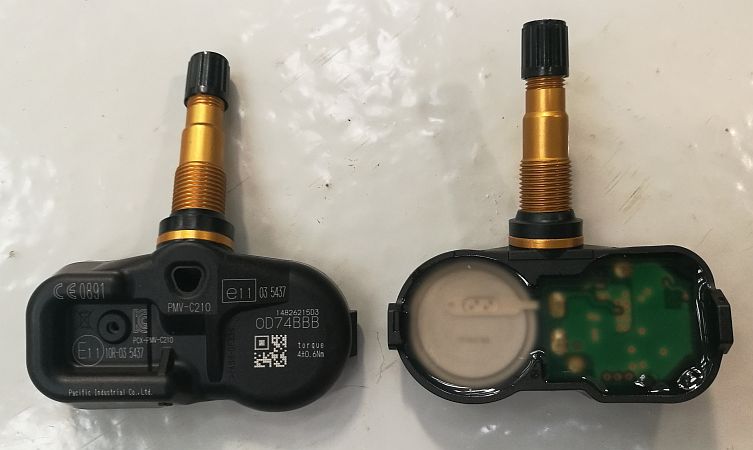
Data from the sensor in each wheel is transmitted wirelessly to a control module connected to the car’s central computer, which prompts a visible alert for the driver if any of the tyres lose pressure. The control module is programmed with the unique serial numbers of the valves within the car’s system. This ensures that the TPMS assembly in each wheel only communicates with its host control module.

The only exception within Toyota’s passenger car line-up is the Proace Verso MPV. This model is equipped with an indirect system, which uses the existing wheel speed sensors within the anti-lock braking system to ‘measure’ tyre pressure by detecting differences in the rate of wheel rotation. A tyre with less air pressure will have a smaller circumference and therefore spin at a faster rate than a wheel that has not lost air pressure.
Data from the wheel speed sensors is communicated directly to the ABS control unit, which prompts a visible alert for the driver if any wheel speed abnormalities are detected.
What should I do if the tyre pressure warning light comes on?
If the tyre pressure warning light comes on, the air pressure in at least one of your tyres will have dropped below a minimum tolerance level – often a deflation of around 20-25%. This may indicate a leak, puncture, or some other kind of damage.
Dramatic changes in ambient temperature, such as driving from a snow-capped mountain to a warm and sheltered valley, can occasionally cause direct systems to prompt an alert until the temperature has stabilised. Similarly, indirect systems can occasionally mistake uneven tyre wear for a fluctuation in tyre pressure.
Irrespective of the circumstances, if the TPMS warning light comes on you should pull into a safe area and visually check the tyres. If any appear to be deflated yet undamaged you should try to re-inflate them to the correct pressure and reset the TPMS (see subheading below).
If the tyre has sustained more serious damage, it will be necessary to either continue your journey on the spare wheel, carry out a temporary repair using a tyre repair kit, or call an emergency breakdown service for a lift to a tyre centre.
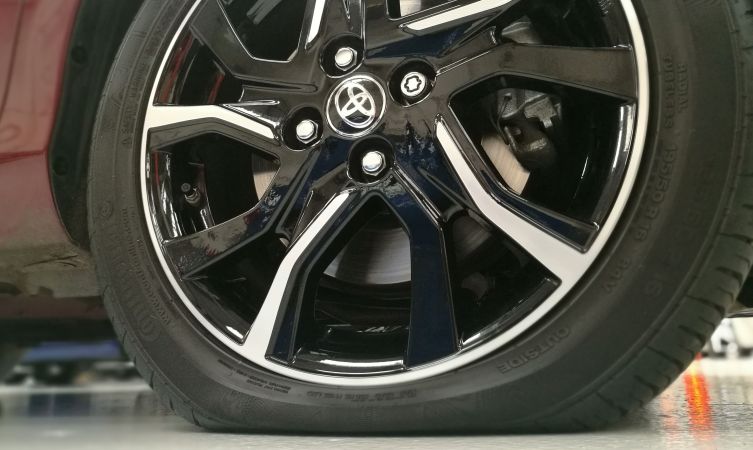
How do I turn off the tyre pressure warning light?
Use the box below to identify the type of TPMS fitted to your car (only current models are listed below). You will also need to know whether the reset function is accessed via a button or sub-menu within the main display.
Once you have accessed the right sub-menu, instructions for resetting the TPMS will be shown within the main display. For those with a physical button, you simply need to turn the ignition on, then press and hold the TPMS button. The warning light will flash a couple of times and then extinguish, at which point the system has been reset.
| MODEL | TPMS TYPE | RESET ACCESS | LOCATION |
| Aygo X | Direct | Software menu | Vehicle Settings menu on Multi-info Display |
| Yaris | Direct | Software menu | Vehicle Settings menu on Multi-info Display |
| Yaris Cross | Direct | Software menu | Vehicle Settings menu on Multi-info Display |
| Corolla | Direct | Software menu | Vehicle Settings menu on Multi-info Display |
| Toyota C-HR | Direct | Software menu | Vehicle Settings menu on Multi-info Display |
| bZ4X | Direct | Software menu | Vehicle Settings menu on Multi-info Display |
| RAV4 | Direct | Software menu | Vehicle Settings menu on Multi-info Display |
| RAV4 Plug-in | Direct | Software menu | Vehicle Settings menu on Multi-info Display |
| GR86 | Direct | Button | Lower dashboard on passenger’s side |
| GR Supra | Direct | Software menu | Vehicle Status menu on Supra Command |
| Land Cruiser | Direct | Button | Under dashboard on driver’s side |
| Highlander | Direct | Software menu | Vehicle Settings menu on Multi-info Display |
| Proace Verso | Indirect | Software menu | Driving Functions menu on Pro-Touch display |
| Mirai | Direct | Software menu | Vehicle Settings menu on Multi-info Display |
What should happen if I replace any tyres?
Direct: The condition and function of the TPMS valve and sensor assembly should be checked each time the tyres are replaced. This will involve a physical inspection and electronic diagnosis using a proprietary technology (example device in image below).
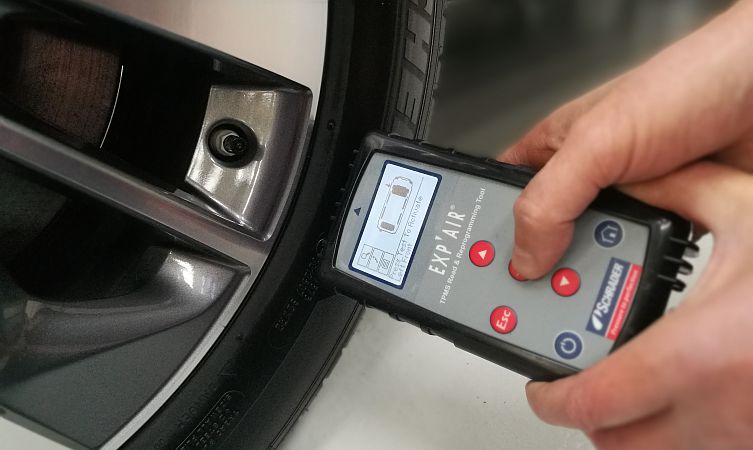
The integrated battery has a life expectancy of around ten years and cannot be replaced. Electronic diagnosis should reveal the health of the battery, which will help you decide whether to replace the entire unit at the same time as the tyre.
Although the main valve assembly is robust, parts exposed to the atmosphere can deteriorate over time. So if the battery level is adequate and the main unit is being retained, it would still be wise to have the grommets, washers, collars and cores (see image below) replaced as a matter of course.

Indirect: As this system is not directly related to the tyres, no further measures are needed, assuming the tyres are being replaced on a like-for-like basis. However, it is always wise to replace the valves when changing tyres.
Will changing the wheels affect the TPMS?
Not if your car features indirect TPMS measuring. In which case, you can switch to and from winter tyres with no additional system programming.
Due to the accuracy and complexity of direct measuring, the TPMS control module is designed to recognise and communicate with only one set of wheels at a time. So if you regularly switch to and from winter wheels it will be necessary for a qualified technician to reprogramme the control module through the vehicle’s OBD port.
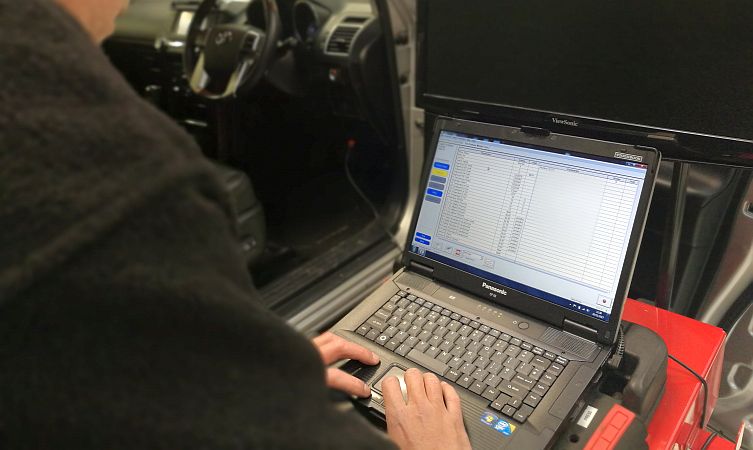
There are occasions when it may be necessary to drive on a wheel that is not equipped with a TPMS valve, such as after a puncture when the spare wheel is fitted. Under such circumstances, the warning light will remain illuminated. The vehicle or tyre monitoring system will not be damaged but the vehicle cannot pass its annual MoT test if the warning light is on.
Do I still have to check my tyres manually?
Although TPMS is designed to deliver a safety alert in the event of a significant loss of tyre pressure, it does not replace manual inspections. Each tyre should be regularly checked to see if it is inflated to the correct air pressure and has sufficient tread depth.






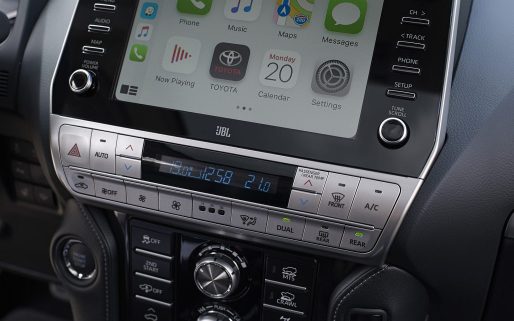
“So if you regularly switch to and from winter wheels it will be necessary for a qualified technician to reprogramme the control module through the vehicle’s OBD port.” Seriously? What was Toyota thinking. This is a bad, cheap design flaw.
Hi Tom,
Thank you for getting in touch.
We are sorry that you feel this way and we will pass your comments on to our Product team.
Thank you for your feedback.
My Avensis allows you to store & switch between 2 sets of wheels/tyres.
HEIDFIRST Was it necessary for a qualified technician to reprogramme the control module through the vehicle’s OBD port to accept the 2nd set of wheels, and if so, was this a one-off exercise? .
Hello Toyota!
This is the first time to me with friends help to switch the tyre from winter to summer and then I got the problem with tyre pressure light!! the lamp flahes 10 sec then still stand ON when I start my car !!! I tried to reset it with reset button but couldn’t help. What I should to do now?
I’m from Sweden
My car is Toyota Auris 2014
Hi Al-Bayati,
Thanks for getting in touch.
If the tyres have been replaced, this means that the new tyres must have new transmitters (tyre pressure sensors). Therefore, the new transmitters need to be registered by a Centre using the Diagnostic Tester.
You can initialise the system, when, e.g you have altered or inflated the tyres.
For more information on this please take a look at pages 427 and 428 of your Owners Manual.
We hope this helps.
Thanks.
Hi guys, I have a 2016 toyota prius active, and basically the black tpms module has broken/snapped from the valve of my front driver’s wheel, do you know the cost of repairing/replacing? Regards.
Hi Din,
Thanks for getting in touch.
At the moment we are unable to provide the part number and a price for this component as we would need to know your VIN number.
We’d advise going to your local Toyota Center as they would be in the best position to assess your car and give you a quote.
Thanks.
My 2017 Toyota Yaris Bi Tone has neither switch or access through any of the menus to reset Tpms….. or am I missing something?
Hi Jim,
Thanks for getting in touch.
The re-set button is under the glove box.
Please look at page 255 of your User Manual, for further details.
We hope this helps.
Thanks.
If only….my user manual has only 203 pages, I’ve looked everywhere under the glovebox, drivers sides, passenger side, menus, and I can’t figure out how to reset it. My Nissan was so much easier to reset, this is a mystery. UK Sep 2017 1.5l right hand drive. Help!
Hi Jim,
Thanks for getting back to us.
I am sorry about the confusion.
I have a scanned copy of the page that I can email to you, if you would like?
Thanks.
Thanks that would be great
My dealer eventually showed me where the TPMS reset button is. It is attached to a small plastic flap way up under the steering wheel, certainly not that obvious and certainly looks like Toyota have said ‘Oh who forgot to put this switch on some of the panels? ‘ as it looks like an afterthought. Not the easiest place to find and you virtually need to be on you hands and knees outside the car to find it. Bad design.
Hi Jessica….still never received the scan
Hi Jim,
We are sorry about that.
I will send it over now.
Thanks.
Stumbled across this by accident – could you please edit this article so that it doesn’t advise people to reset their TPMS after re-inflating their tyres. The system does not need to be reset, once the tyre is set to the correct pressure the light will automatically go out after a short period (30 seconds or so; the system takes a long-term reading rather than a single reading, to avoid spurious data). The reason that the TPMS button should not be pressed is that if the TPMS light has been caused by a fault with the system, you are telling your car that the “fault” condition is correct, and you will potentially stop it working properly.
Hi there,
Thanks for your comments. When the tyre pressure warning system is initialised, the current tyre inflation pressure is set as the benchmark pressure.
Although it is not necessary to reset the system if the tyres are re-inflated to the correct values and the same pressures as when the tyre pressure warning system was last reset, it is best practise to initialise the system each time all the tyre pressures have been adjusted. Doing this will ensure that the benchmark value has been correctly registered and in case the previous benchmark value was different.
If there is a fault or malfunction with the system, the warning light will come on after blinking for 1 minute and you won’t be able to prevent this. For full details, please refer to the Owner’s Manual specific to your vehicle.
Hi there, my 2016 Toyota Auris Hybrid sensor was broken when changing tyres. The garage repaired this with a clone sensor and added to the cars computer.
The light went out and everything fine. However now and then when I park on certain roads the warning light comes on (not always but certain roads) a solid warning light but after a minute it clears off and then it reappears again! I noticed it’s roughly a minute it stays on for. However when I drive everything’s fine and no warnings!
My question is this normal? I only had it for a week.
Is the clone not syncing quickly as the other 3 in time?
Is it bad practise to have a clone with 3 other Toyotas sensors?
I have checked the pressures and re-set using the button on the car. However occasionally this happens!!!!!
Hi Syed,
Thanks for getting in touch. Firstly, we would suggest for you to check that the tyres have been inflated to the correct pressure, as the warning light can illuminate as a result of a tyre being inflated to a lower pressure.
Aside from this, we would advise you to go back to the garage where the clone sensor was fitted and ask them to look into this issue, or take the vehicle to your local Toyota Centre and ask for a genuine sensor to be fitted.
Hope this helps.
Hello, I have a question regarding pressure sensors. In my previous car (BMW) I could see actual pressure for each wheel on the central display. I can’t find such option in my 2017 avensis. Are the sensors only to give a warning or also to measure tyres pressure in Toyota cars?
Hi Andy,
Thanks for getting in touch. The tyre pressure warning light is there to inform you as to whether one of your tyres have low pressure. It does not show the exact pressure of each tyre.
Hope this helps.
This is such a bad design, whoever thought of it should be fired! I had the same problem TPMS light came on after I took delivery of 2017 Avensis tourer. Mistakenly didn’t contact Vantage Toyota in Birmingham to mention it and just monitored tyres. Eventually had 4 tyres changed and garage told me was faulty tpms so took it to Toyota Huddersfield. They charged me £50for diagnostics as they had to remove all 4 wheels to find which one was the problem. They also wanted £206 to replace ONE TPMS!! UNBELIEVABLE!
Hi Neal,
Thanks for getting in touch. We are sorry to hear about this issue, and have emailed you directly regarding opening a customer relations case on your behalf with our team in order to help you further.
Thanks.
If one of the tyre pressure is low it will bring up a warning sign. You will then need to check which one it is , if it’s not very obvious!!! Common sense says surely like BMW it should tel you which one is low so your not wasting your time pumping all 4…..
Hi I have just bought Toyota CHR 1.2 Turbo 2017. The tyre pressure light flashes when i start the car and then remains on the dash. I have attempted to reset it through menu but it does not work. I have checked tyre pressure and they are absolutely fine. What should I do.
Hi Zeeshan,
Thanks for contacting us. If the tire pressure warning light frequently comes on after blinking for 1 minute when the power switch is turned to ON mode, we would advise for you to contact your local Toyota Centre. Also, the tyre valves have electronic sensors. Therefore, if this flashing has started happening since having a tyre change, it may be because the tyre company has replaced these for a normal tyre valve, meaning that the tyre pressure monitoring system will not work.
We hope this helps.
Hi 👋. Do you know what coding us for sensor valves for Toyota Verso 2016?
Many thanks for help
Hi Anna,
Thanks for getting in touch. If you could please provide a reg and/or VIN number, we will be able to assist you further.
Thanks.